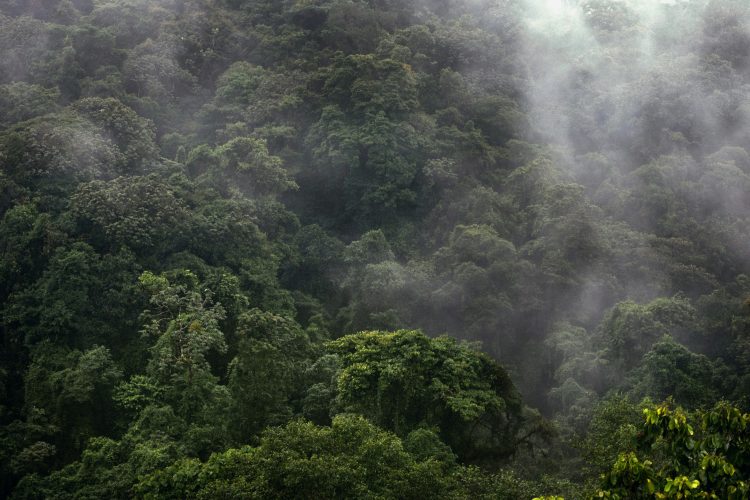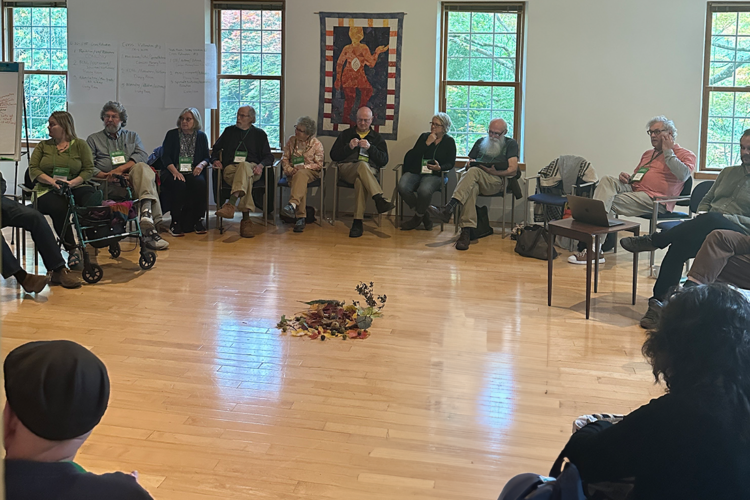Q&A with Douglas Gwyn

Doug Gwyn, the author of A Sustainable Life: Quaker Faith and Practice in the Renewal of Creation, generously agreed to be interviewed for this issue of BeFriending Creation. Thanks, Doug!
1. You explain how your thought and interests developed through several books, always including the thread of your concern for the Earth. Was there a defining moment or experience that let you know it was time to begin actively working on this book? If so, what was it?
The leading for this book began with the opportunity to teach a basic Quakerism class at Pendle Hill in the fall term of 2011. I decided to see if I could re-cast the usual categories of faith and practice within the horizon of our growing concern for living sustainably. I had noticed over my years of study that what we now call sustainability is an implicit theme woven through early and traditional Quaker writings and the Quaker testimonies. I just needed to bring that out more explicitly. In Quaker beginnings and renewals over 350 years, we have framed our faith and practice in various ways, based upon different challenges and fresh inspirations. In this century, it seems clear that sustainability is the challenge/opportunity we face most urgently. It is the horizon within which we are going to live. Moreover, life at Pendle Hill, in community and on a very special 23 acres of land, brings earth-care sensibilities to the fore in our minds. So I realized that it was time at last to try to put this vision together. After teaching the course once, I had a three-month stint as a Friend-in-Residence at Woodbrooke, and I realized that it was a perfect opportunity to work the course sessions into chapters of a book. I taught the course two more times at Pendle Hill and got feedback on the chapters from course participants, adding to my sense that this book creates a compelling whole-vision.
I had never thought that I would attempt to write an introduction to Quakerism—there are so many out there already. And this book is in some ways a bit beyond entry-level reading for new Friends and interested seekers. But it both introduces and re-conceives Quaker faith and practice in a way that I hope can contribute to renewed Quaker relevance.
2. Do you feel Friends have something unique to offer the world as models of sustainable living?
Yes. Many Friends are connecting with a variety of Eastern and neo-pagan spiritual traditions for stronger connection to the earth, But I feel we have always had a special, prophetic role at the fringes of the wider Christian family, to bridge between western Christianity and other religions, and to a closer felt connection with the creation/natural world. That is one reason why the book emphasizes the prophetic-Christian understanding of Quaker spirituality. We have many potential allies and collaborators in the churches. Liberal Friends have been too dismissive of the wider church, largely because the media tend to report mainly right-wing, regressive movements among Christians. Let’s look in all directions for links we can make in our work for a sustainable life. We have things to teach and model, and things we can learn from others too.
3. Do you have a particular place or landscape you seek out to feel God’s presence and/or find peace? If so, can you describe it for us?
I grew up in Indiana. I’ve lived in a variety of places in North America and in England, each with its own natural beauty and sense of God’s presence. But I always feel most at home in the landscape of Indiana, even if my calling in ministry hasn’t put me there much of the time over the years. I particularly feel at home in the woods. I sense the community of creatures most peacefully and vitally there. I was a state park naturalist for three summers in Indiana, which was a very rich time– especially in contrast to the nine months of each of those years I was living in Manhattan, at Union Theological Seminary. I loved both environments, but the summers kept my connection with the earth strong.
4. I love the framework of the 16 energies and 8 axes. How did this framework arise for you? Have you discovered in your own growth and in meetings you’re familiar with that different groups and individuals seem to be more easy with some and not so much with others?
Over the years, my biblical and Quaker studies have been supplemented by the perspectives of dialectical philosophy, both Hegelian and Marxist. That influence was important in formulating the eight axes, as eight dialectical energies that vitalize our faith and practice. I have also discovered more recently a dialectical stream of biology, particularly the work of Richard Lewontin and Richard Levins. Actually, I think of the eight axes of Quaker faith and practice as a kind of Quaker DNA, where the sixteen energies pair up like the nucleic acids in a gene, and the wheel is more a double-helix. I dropped that from the book, because I was concerned that it might over-complicate things for readers (and I wondered if it might be pseudo-science). But the book argues strongly for the unity of spiritual and material reality and I haven’t quite let go of the Quaker DNA idea.
You’re right that different individuals, groups, meetings, and probably branches of Quakerism may have different strengths and weaknesses among these 16 energies and need to balance their faith and practice accordingly.
5. What do you hope Friends will take away from your book? Do you have a vision of where Friends’ “prophetic imagination” could lead?
Chel Avery, who edited the book for FGC Quaker Press, called it “deep sustainability.” My main concern in the book is to help Friends see the deeper implications of a sustainable life, and the wider ramifications of Quaker faith and practice in this new century. My hope is that the interaction of the two will renew us, probably in ways I can’t foresee.
6. What’s next for you, writing-wise?
2014 was a little publication- crazed. Besides the sustainability book in July, a Pendle Hill pamphlet on Quakers and Christ came out in February, a new edition of my first book, Apocalypse of the Word: The Life and Times of George Fox, appeared in November, and a new history of Pendle Hill (Personality and Place: the Life and Times of Pendle Hill) finally became available in December. In general, I’m hoping to slow down a bit. However, my new part-time pastoral work with Durham Friends in Maine does allow time for writing, and I’ve been groping my way toward something on the Quaker peace testimony for today.
I guess I can’t help it.

